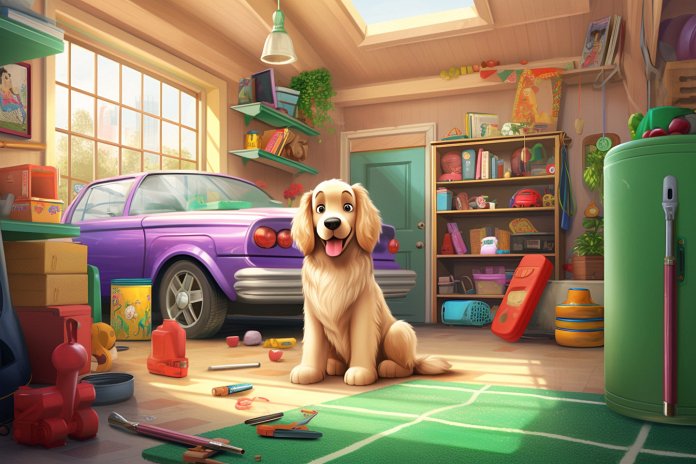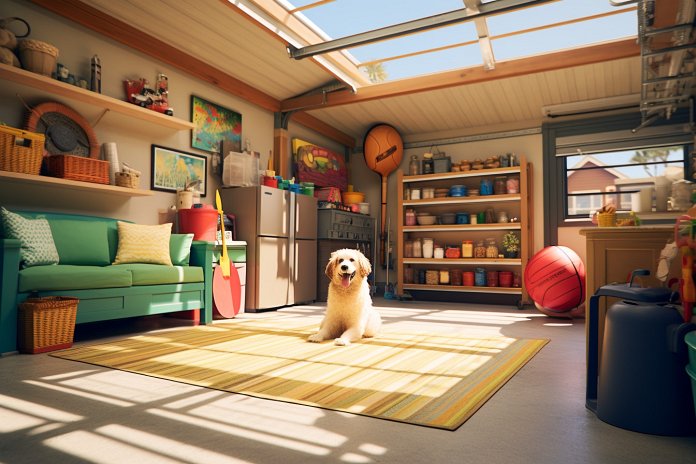
Dogs are resilient and adaptable, but leaving them in the wrong environment can be dangerous. Many people consider leaving their dogs in the garage during extreme weather, but is it safe? This article explores the dangers of leaving dogs alone in garages.
Signs That Dogs Shouldn’t Live in Garages
Deciding where your dog should live can be difficult. While some people believe dogs should live indoors, others think they should be outdoors or in a garage. However, it’s best for dogs to live inside your home. Outdoor dogs are exposed to extreme temperatures that can cause health problems such as heat stroke or frostbite.
Dogs in garages are also exposed to temperature extremes. In the summer, the garage can become too hot and stuffy, similar to a hot car. In the winter, if snow or ice enters the garage, it can be too cold for the dog without proper bedding.
Body Language
Dogs communicate through body language, and certain signs indicate they are unhappy in the garage, such as barking, whining, dropped ears, and avoiding eye contact.
Other Signs
Other signs that dogs aren’t safe in garages include their vulnerability to extreme temperatures, access to dangerous materials like chemicals, and the risk of injuring themselves on tools or equipment.
History of Dogs Living in Garages
In the past, it was common for dogs to be brought into the garage during extreme weather. However, as more people consider dogs as family members, they are keeping them indoors. Garages are not suitable environments for dogs due to uncontrollable temperatures and access to harmful chemicals.
Science Behind Dogs Living in a Garage
Dogs are adaptable and can live safely in a garage if certain precautions are taken. Creating an enclosed area away from dangerous substances and objects, using a fan or heater for temperature control, and providing sufficient food, water, exercise, and interaction can make the garage a safer space for the dog.
Having Your Dog Living in a Garage
While leaving a dog in the garage for a few hours is generally safe, keeping them there all the time is not. Dogs need social interaction, affection, and exercise. Garages often contain tools, chemicals, and ventilation problems, making them unsafe for dogs. Monitoring food and water intake can also be difficult in a garage setting.
Conclusion
Leaving a dog in the garage may seem like a convenient option, but it poses risks to their safety and well-being. Dogs are best kept inside the home, where they can receive proper care, attention, and protection from extreme temperatures and hazardous substances.
“Keeping your dog in the garage may seem like a convenient solution, but it can pose serious risks to their health and well-being.”

Tips & Things to Know
1️⃣ Dogs should not live in garages due to the potential dangers they may face. Extreme temperatures, access to dangerous materials, and the risk of injury from tools are all hazards that could harm your dog if left unsupervised in a garage.
2️⃣ Pay attention to your dog’s body language to determine if they are unhappy or uncomfortable in the garage. Signs such as barking, whining, dropped ears, and low tail carriage can indicate that your dog is not content in their environment.
3️⃣ If you must keep your dog in a garage for a short period of time, take steps to create a safe and suitable space. Provide proper ventilation, secure any dangerous substances or objects, and ensure your dog has access to food, water, exercise, and social interaction. However, it is still best for your dog to live inside your home where they can receive the attention and care they need.
Frequently Asked Questions, Answered ✅
1. What are the dangers of leaving a dog alone in a garage?
Dogs left alone in a garage may be exposed to extreme temperatures, have access to dangerous chemicals, and may injure themselves on equipment or tools.
2. How can I tell if my dog is unhappy in the garage?
Signs that your dog is unhappy in the garage include barking, whining, ears dropping, low tail carriage, dropped ears, and averting eyes.
3. Can dogs adapt to living in a garage?
Dogs are adaptable, but living in a garage can be unsafe. Creating a safe space with an enclosed area, away from dangerous substances and objects, can make the garage a safer environment for a dog.
4. What are the risks of keeping a dog in a garage?
Risks include exposure to extreme temperatures, access to harmful chemicals, and the potential for injuries from tools or equipment.
5. Is it okay to leave a dog in the garage for a few hours?
Leaving a dog in the garage for a couple of hours, as long as it is done safely, is generally not a problem. However, keeping a dog in the garage all the time may deprive them of social interaction, exercise, and attention, which are essential for their well-being.